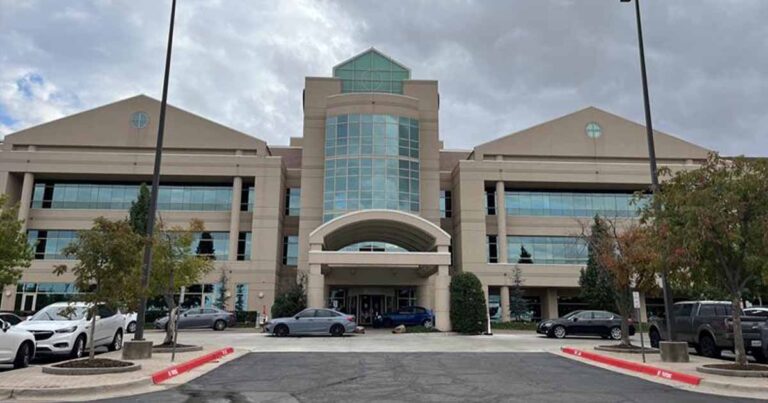:max_bytes(150000):strip_icc():format(jpeg)/Health-GettyImages-482149423-7e7e4636996e493db9b7142d7d619b24.jpg)
A hyperbaric chamber is a specialized, enclosed space where hyperbaric oxygen therapy occurs. This environment allows your lungs to absorb more oxygen, which then gets delivered to your cells and tissues.
Being in a hyperbaric chamber can increase the amount of oxygen in your blood. The hyperbaric oxygen therapy it provides can help in the treatment of several conditions, including carbon monoxide poisoning, wound healing, and decompression sickness (the bends).
Some hospitals have hyperbaric chambers. The chambers may be a room that can fit several people or a tube that holds one person at a time. Outpatient facilities may have smaller units.
Hyperbaric chambers are specialized capsules or rooms that provide pure concentrations of oxygen. Every tissue and organ in the body requires oxygen for survival and functioning.
Your lungs absorb oxygen as you sit or lie in the hyperbaric chamber. The absorbed oxygen travels through the blood and reaches the body’s tissues. The air we normally breathe contains 21% oxygen, while the air in a hyperbaric chamber contains 100% oxygen.
The hyperbaric chamber has higher air pressure than normal, which allows the lungs to absorb more oxygen. Higher oxygen levels in the body can help fight some infections and promote faster wound healing.
The United States Food and Drug Administration (FDA) regulates the oxygen used in the hyperbaric chamber, plus the chamber itself.
Hyperbaric oxygen therapy delivers several benefits, including:
- Provides higher oxygen supply to the tissues in the body
- Improves blood circulation in the body
- Accelerates healing of wounds, including microbial-infected wounds, thermal burns, radiation-induced wounds, skin grafts, traumatic wounds, and diabetes-related ulcers
- Increases formation of collagen, a protein that supports connective tissues (e.g., muscles, ligaments, tendons)
- Improves immune system functioning and suppresses the growth of infection-causing bacteria
- Reduces inflammation and prevents tissue damage due to inflammation
- Reduces reperfusion injury, which is damage that occurs due to restoration of blood supply in an organ or area that did not get proper blood supply
Consult your healthcare provider to understand if hyperbaric oxygen therapy can improve your specific health condition. They may recommend the therapy alone or with other conventional treatments such as medications or surgery.
Hyperbaric oxygen therapy has been FDA-approved for use in the treatment of many medical conditions. These include:
- Carbon monoxide poisoning
- Cases of severe anemia when blood transfusions can’t be used
- The presence of gas bubbles or air in the blood vessels
- Decompression sickness, where dissolved gases form bubbles in the tissues and bloodstream (this is most often associated with diving)
- Severe, large burns that are treated at a burn center
- Gas gangrene, a type of tissue death
- Severe infections of the skin and bone
- Crush injury
- Radiation injury
- A skin graft flap (healthy skin and tissue used to cover a wound) that’s at risk of dying
- Wounds that do not heal easily
- Sudden loss of vision due to blocked blood flow
- Sudden hearing loss that occurs without any known cause
Research into other conditions that hyperbaric oxygen therapy can benefit is ongoing. Findings suggest COVID-19, cancer, brain injury, dementia, and stroke are just some of the conditions that hyperbaric oxygen therapy could help.
The FDA has not approved using hyperbaric oxygen therapy for these conditions, and receiving hyperbaric oxygen therapy for unapproved conditions can be risky.
Your healthcare provider may perform a physical examination, check your blood glucose (sugar) levels, and assess your eardrums to ensure hyperbaric oxygen therapy is safe for you. Tell your healthcare provider what medications you take since certain drugs can interfere with the treatment.
Hyperbaric oxygen therapy usually takes place in two types of chambers: monoplace or multiplace.
Monoplace chambers can only accommodate one person at a time and are often shaped like a tube. The entire chamber is pressurized with air and 100% oxygen. A trained professional monitors you from outside the chamber via intercom.
Multiplace chambers can accommodate multiple people. People use a hood (sealed covering over the head) or a tight-fitting face mask to breathe in pressurized air and 100% oxygen while in the chamber. A healthcare provider is present to assist and monitor people’s health.
The increased pressure in the chamber may cause you to experience pressure or fullness in your ears. You can either sit or lie down during the treatment. You can watch TV, listen to music, watch videos, or read books. The entire procedure lasts about 90 minutes to 2 hours.
When the treatment is over, the pressure gradually drops, making your transition to the lower pressure outside safer and easier. You may experience popping in the ears after exiting the chamber.
Serious complications are rare with FDA-approved hyperbaric chambers. The chambers and the hyperbaric oxygen therapy they provide are generally safe and well-tolerated. In some cases, the therapy can lead to certain risks, including:
- Sinus and ear pain
- Temporary vision problems
- Middle ear injuries, including tympanic membrane rupture
- Oxygen toxicity, which may cause seizures or respiratory failure
- The triggering of claustrophobia (fear of confined spaces)
Hyperbaric oxygen therapy may not be suitable for everyone. You should avoid using a hyperbaric chamber if you:
- Are pregnant: Can adversely affect the fetus
- Have a respiratory disease: Can lead to lung collapse
- Have a fever: Increases your susceptibility to oxygen toxicity.
- Recently had ear surgery: Increases the risk of ear damage.
If you are cleared to use hyperbaric oxygen therapy, take precautions regarding what you bring into the chamber.
High concentrations of oxygen are a fire hazard. Avoid combustible materials or something that may cause a spark or fire inside the hyperbaric chamber. Avoid carrying oils, electronics, or other flammable substances that may increase the risk of fires.
A hyperbaric chamber is a capsule or room where hyperbaric oxygen therapy occurs. Hyperbaric oxygen therapy delivers 100% pure oxygen at increased air pressure. This allows the lungs to take in more oxygen, which can help treat more than a dozen medical conditions.
Hyperbaric chambers are located in hospitals or outpatient facilities. You sit or lie in the hyperbaric chamber when receiving the therapy. While complications are possible, hyperbaric oxygen therapy is generally safe.



















+ There are no comments
Add yours